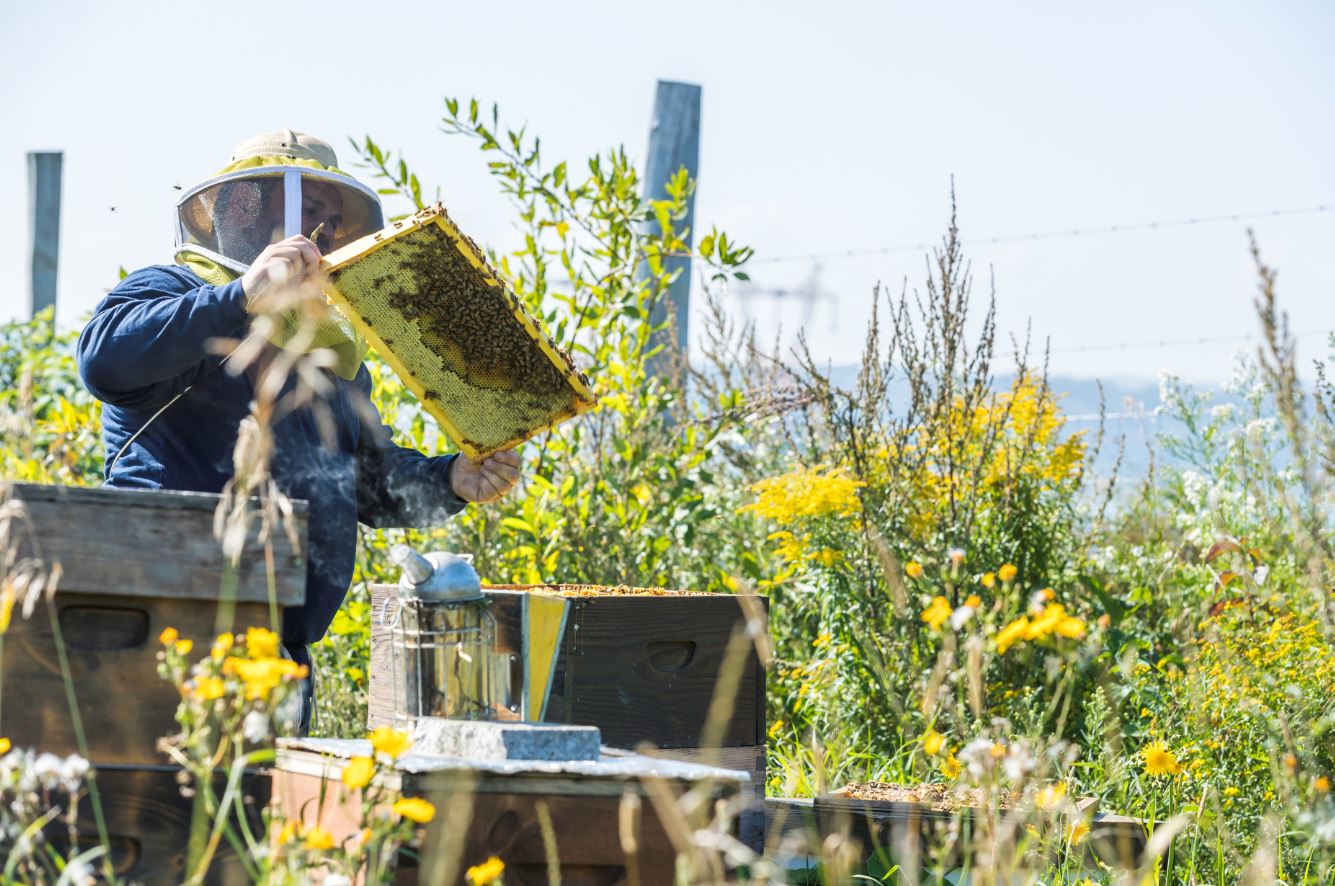It’s no coincidence that North and South Dakota produce more honeybees – and pheasants – than anywhere else
By John Pollman
Situated in the hills overlooking the James River Valley in southeastern North Dakota, Brian Heyd’s bee yard of hives is a hub for honey production during the summer months.
Heyd’s bees find the pollen needed to produce honey for his business, aptly named Heyd’s Honey, in the surrounding mix of native flowering plants (known as forbs). Naturally, he values these wild acres for the role they play in his business. But the LaMoure man also sees their value in the bigger picture.
A LANDSCAPE ALIVE
“When you look across an area full of wildflowers and grasses, the landscape is just alive,” Heyd says. “There is a lot going on out there, and not just with the bees, but with other pollinators and wildlife too.”
The same diverse mix of forbs and grasses that are so vital for honey production are especially beneficial for hen pheasants and their broods. Yet, because this type of cover used for brood rearing in the summer looks so different than the habitat types where pheasants congregate in the fall and winter, it is a connection often missed by pheasant hunter-conservationists.
“If you think about it from a pheasant chick’s perspective, it really does make sense,” explains Melissa Shockman, a conservation specialist for Pheasants Forever in North Dakota. “A solid stand of grass is difficult to maneuver for a pheasant chick and offers little for food. By contrast, a pollinator plot is more open and allows the chicks to walk around more easily. And all those forbs with their flowers offer a food source for bugs, which in turn are a vital source of food for pheasant chicks.
ROOSTER CONNECTION
“This connection between “the birds and the bees” is a big reason why Pheasants Forever so strongly supports initiatives that support developing high-quality pollinator habitat, including those found in the Farm Bill and through non-governmental organizations such as the Seed A Legacy Pollinator Habitat Program available through The Bee & Butterfly Habitat Fund.
“We know that a diverse landscape with a mix of cover types is what is needed to sustain strong pheasant populations, and the same goes for bees and honey production,” says Shockman. “This is why where you find really good pheasant hunting, like in North Dakota and South Dakota, you’re often going to find the top producers of honey, too."
BIG BUSINESS
Bees really are a big business in the Dakotas. In 2017, the state produced over 33 million pounds of honey valued at over $65 million, making it the No. 1 producer of honey in the nation. South Dakota comes in at No. 2, with bees producing 14.5 million pounds of honey worth $28 million.

In fall, bees from these two states are carted around the country to provide their pollinating services to a number of food types. Many bees go to California to work in the almond groves, while others make their way to Florida to help citrus producers. Throughout the course of a year, bees from the Dakotas can also be found in Maine pollinating blueberries and in Texas on grapefruit farms. Arizona, Louisiana, Mississippi, Washington, Idaho (and more) all benefit from bees too.
CONCLUSION
But some of the bees’ best work happens in pheasant country, where Brian Heyd says he planted his own pollinator plot earlier this spring, to supplement the wild acres surrounding him.
“My son likes to hunt pheasants,” he says. “It seemed like the right thing to do.”